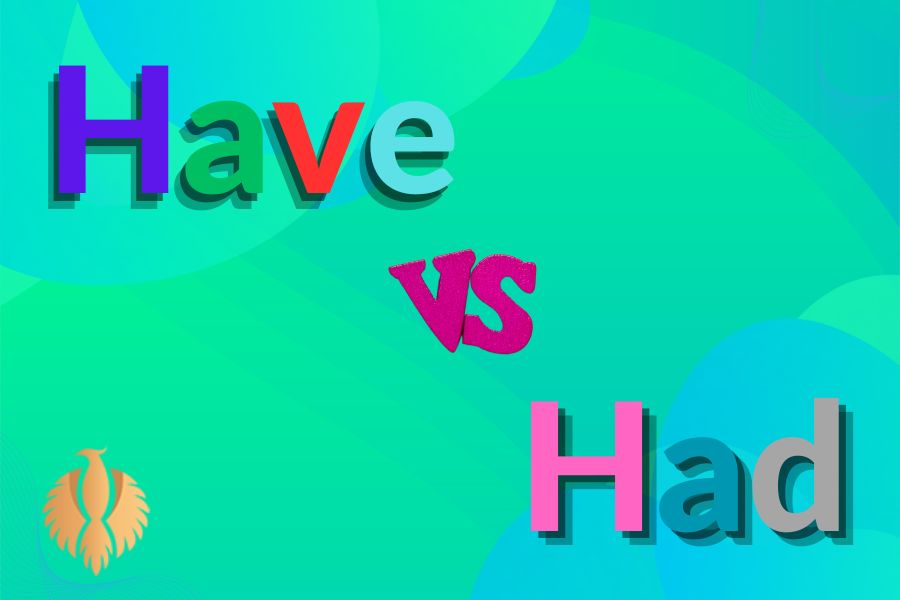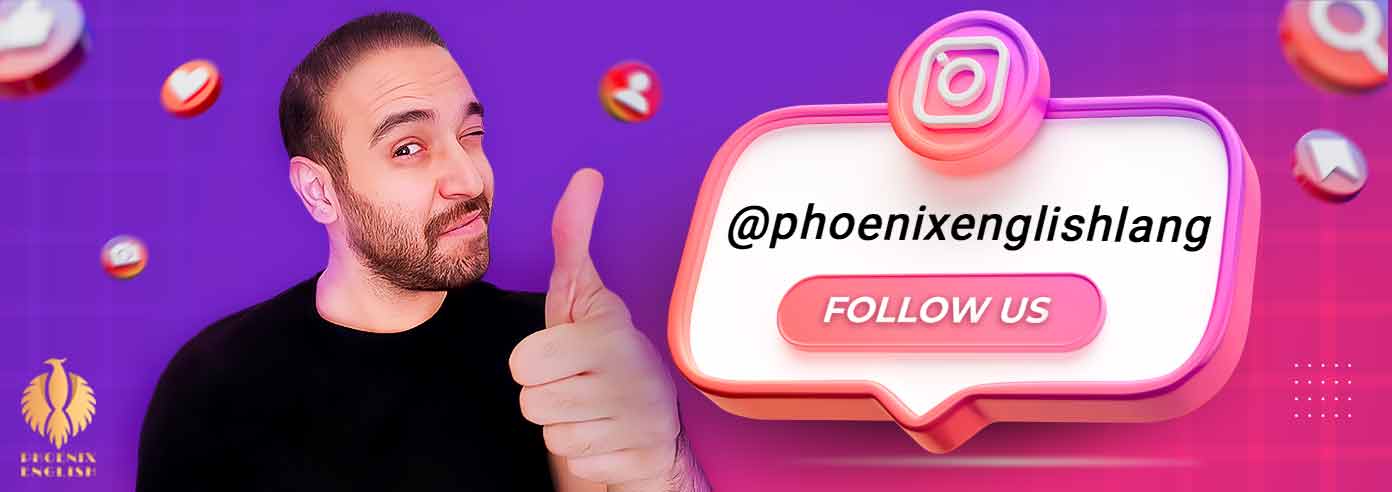“have” and “had” are both forms of the verb “to have,” but they are used in different contexts and tenses. “Have” is the present tense form, typically used to indicate possession, experiences, or relationships in the present or future.
In contrast, “had” is the past tense form, employed to express ownership or situations that occurred prior to the present time.
Understanding the distinctions between these two forms is essential for mastering English grammar and ensuring effective communication.
You might also enjoy:Which of the Following: Definition + Complete Usage + Grammar
![a infographic about Have Vs Had: Complete Grammatical Guide [2025 Method]](https://phoenixenglishlang.com/wp-content/uploads/2023/07/unnamed-6.png)
Important Points:
- Tense Usage: “Have” is primarily used in the present simple tense and the present perfect tense, while “had” functions in the past simple tense and the past perfect tense.
This difference is crucial for constructing grammatically correct sentences, as it determines the time frame of the actions or states being described.
- Possession vs. Experience: Both terms signify possession, but the context differs: “have” indicates current ownership or states, whereas “had” refers to past ownership or experiences that are no longer relevant.
For example, “I have a new car” implies current ownership, while “I had a car when I was younger” indicates a previous experience.
- Forms and Conjugation: The conjugation of “have” and “had” changes depending on the subject of the sentence.
For instance, “I have,” “you have,” “he/she/it has,” and “they have” for present, compared to “I had,” “you had,” “he/she/it had,” and “they had” for the past. Learning to conjugate both forms correctly is key, especially in complex sentences.
- Contracted Forms: “Have” and “had” can be contracted in conversational English. “I have” becomes “I’ve,” and “I had” can be contracted to “I’d.” Understanding and using these contractions improves fluency and enhances conversational skills.
- Contextual Examples: Real-life examples illustrate how these forms function in language.
For instance, saying “I have finished my homework” demonstrates a completed action that affects the present, while “I had finished my homework before dinner” illustrates a past action that occurred before another past event.
You might also enjoy:Looking Forward To Seeing You: Grammar + Examples[2025]
As we delve deeper into the topic of “Have Vs. Had: Complete Grammatical Guide [2025 Method],” we will explore comprehensive definitions, usages, examples, and practical tips for mastering these fundamental components of English grammar.
Our approach will employ the 2025 Method, which focuses on modern teaching strategies and interactive learning designed to help you grasp these concepts effectively.
—
In the journey toward mastering English, comprehending the nuances of verb usage is fundamental for achieving fluency and precision.
The distinction between “have” and “had” is a foundational element that can both clarify meaning and enhance the quality of communication.
Understanding “have” as a means of connecting present experiences and relationships is vital.
For example, saying “I have a meeting tomorrow” communicates not just ownership of a commitment but also its relevance in the near future.
Conversely, “had” is rooted in the past, often reflecting experiences or states that shape our current narrative.
For instance, “I had a wonderful trip last summer” conveys something that is no longer the case but remains significant in the context of a conversation.
With the 2025 Method—a contemporary pedagogical approach—learners can navigate these differences through practical, engaging activities.
This method emphasizes integrating grammar learning with relevant applications and real-life scenarios to foster retention and understanding.
Throughout this comprehensive guide, we will provide a variety of examples and exercises to reinforce learning about “have” and “had.”
By dissecting their uses in different contexts and establishing clear distinctions, learners will become adept at using these forms naturally and confidently in both written and spoken English.
As we embark on this exploration of “Have Vs. Had,” we aim to empower you with the tools necessary for effective communication, enabling you to articulate thoughts clearly and accurately.
With this foundational understanding, learners will not only enhance their grammatical skills but also deepen their appreciation for the richness of the English language.
Join us as we uncover the intricacies of “have” and “had” and elevate your mastery of English grammar.
You might also enjoy:Emersion Vs Immersion: Meaning, Differences, and Examples
Today, all your questions will be answered here. So, follow me through this interesting lesson as we explore the following key points:
1.Basic Definitions and Uses: We will start by defining “have” and “had” and explaining their basic uses. This section will cover how these verbs function as both main verbs and auxiliary verbs.
2.Present Perfect Tense: Learn how “have” forms the present perfect tense, which is essential for talking about actions that have occurred at an unspecified time before now. We will provide examples to illustrate this usage clearly.
3.Past Perfect Tense: Discover how “had” is used to form the past perfect tense, which describes actions that were completed before another action in the past. This section will include examples to help you understand this concept better.
4.Common Mistakes and How to Avoid Them: We will highlight some of the most common mistakes learners make when using “have” and “had” and provide tips on avoiding these errors. This will help you refine your grammar and avoid common pitfalls.
5.Practice Exercises: To reinforce your learning, we will include practice exercises that you can complete to test your understanding of the material. These exercises will help you apply what you have learned and ensure that you can use “have” and “had” correctly in various contexts.
6.Advanced Usage: For those who want to take their understanding to the next level, we will explore some advanced uses of “have” and “had,” including their use in conditional sentences and other complex grammatical structures.
By the end of this guide, you will have a thorough understanding of how to use “have” and “had” correctly.
You will be able to construct sentences with greater accuracy and confidence, and you will have the tools you need to continue improving your English grammar skills. So, let’s get started on this journey to mastering “have” and “had”!
Don’t miss our new video about Have Vs Had – watch now!
You Might Also Enjoy: Top 60 Most Common Simple Sentences In English
Have Vs Had As a Main Verb
Actually, “have” and “had” are different tenses of the verb “to have”. “Have” is the present participle and “had” is the past participle.
Therefore, when talking about the present time, we use “have” and when talking about the past, we use “had”.
Now, let’s review the meanings and usages of the word. The first usage of the word as a main verb is to express ownership.
Examples:
• I have a red car (simple present tense)
• They have two dogs. (simple present tense)
• I had a red car. (simple past tense)
• They had two dogs. (simple past tense)
The second usage of the word “have” as a main verb is to express Events, actions, experiences and activities.
Examples:
• We have a break at 10 am. (Simple present tense)
• I have an exam today. (Simple present tense)
• We had a break at 10 am. (Simple past tense)
• I had an exam yesterday. (Simple past tense)
The third usage of the verb is for Eating food and meals.
Examples:
• I usually have coffee and croissants for breakfast. (simple present tense)
• They usually have dinner together. (simple present time)
• We had a wonderful meal in the new restaurant. (simple past tense)
• I had a sandwich before going to the class. (simple past tense)
You might also enjoy:How Are You Fairing or Faring? Differences + Examples
Have Vs Had As an Auxiliary Verb
First, let’s review the meaning and uses of auxiliary verbs. Auxiliary verbs, also known as helping verbs, are minor verbs that support the sentence’s main verb to create complex grammatical concepts like aspects of time or modality.
The three main auxiliary verbs are be, do, and have. However, all three of these can also be used separately as action verbs. When you see one of these verbs in a sentence, look for a second verb to determine if it’s being used as an action verb or an auxiliary verb.
In the following, you are going to learn how and when to use “have” and its past participle “had” in different tenses.
Well, “have” as an auxiliary verb is used in five conditions: the present perfect simple, the present perfect continuous, the future perfect simple, the future perfect continuous and perfect modal tenses. As you know, for the third person singular, “have” is changed to “has”.
Examples:
Present perfect simple:

• I have eaten pasta today.
• Sha has received the letter this morning.
• We have accepted their invitation.
• Our dog has not eaten anything since last night.
You might also enjoy:Too Cute Meaning Vs To Cute (To Vs Too) + Examples
Present perfect continuous:

• We have been working all day.
• I have been learning English for 8 years.
• My mother has been working as a chef for more than three years now.
• My roommate has been studying since this morning.
You might also enjoy:What Kind of Vs What Kinds of – Differences + Examples [2025]
Future perfect simple:
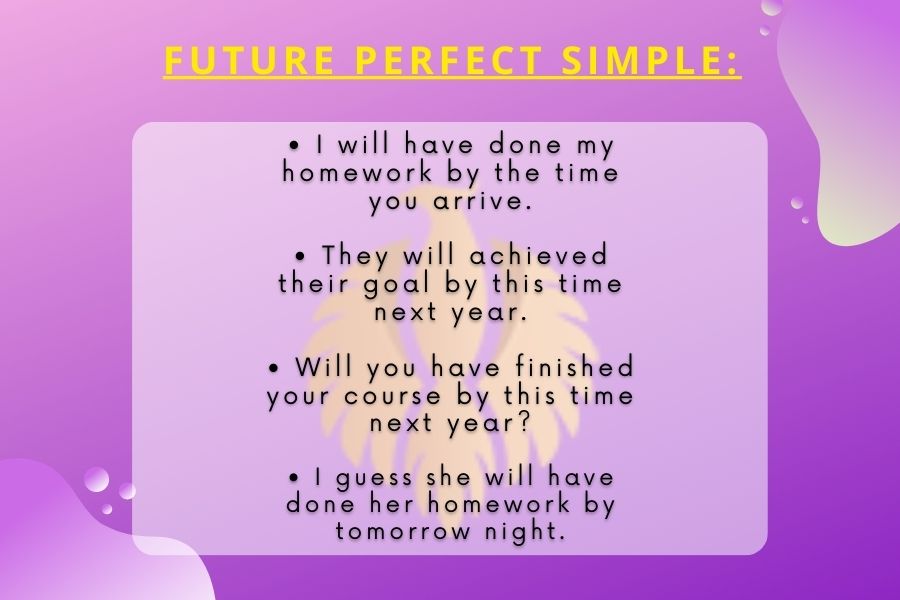
• I will have done my homework by the time you arrive.
• They will achieved their goal by this time next year.
• Will you have finished your course by this time next year?
• I guess she will have done her homework by tomorrow night.
Future perfect continuous:
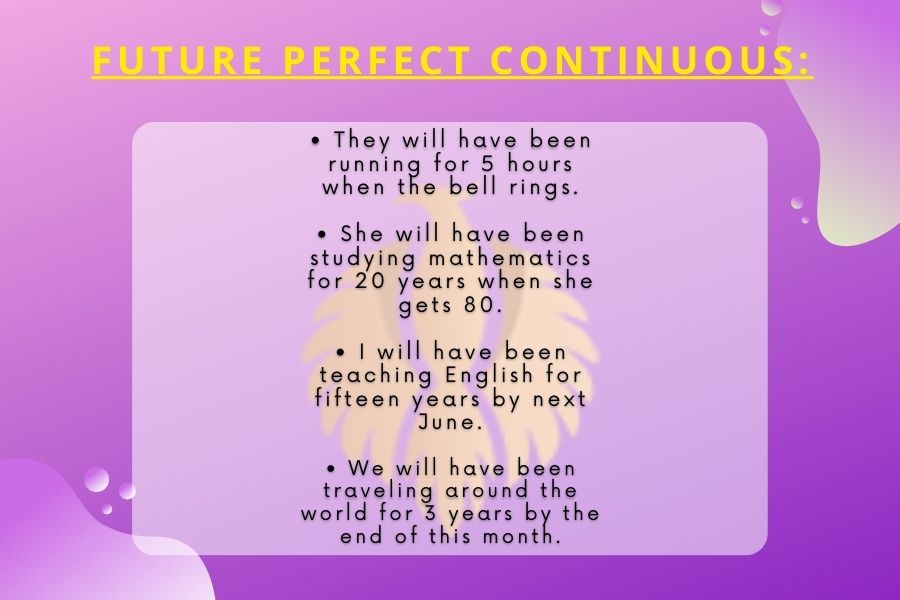
• They will have been running for 5 hours when the bell rings.
• She will have been studying mathematics for 20 years when she gets 80.
• I will have been teaching English for fifteen years by next June.
• We will have been traveling around the world for 3 years by the end of this month.
Perfect modals:
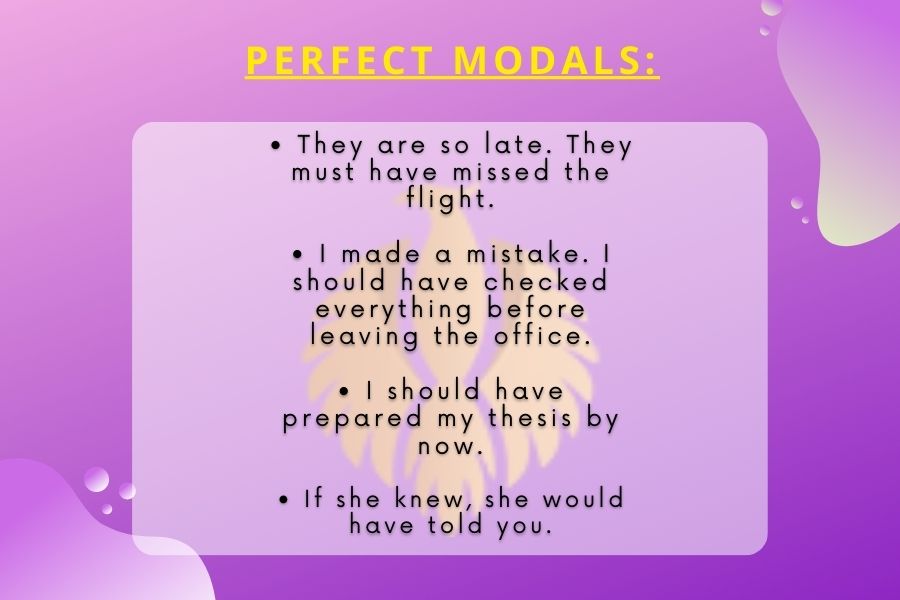
• They are so late. They must have missed the flight.
• I made a mistake. I should have checked everything before leaving the office.
• I should have prepared my thesis by now.
• If she knew, she would have told you.
Now, “Had” as an auxiliary verb is used in two conditions: past perfect simple and past perfect continuous.
You might also enjoy:Interested In or On: The Differences + Examples [2025]
Examples:
Past perfect simple:

• She had written the letter before noon.
• We had arrived home when she called.
• I had not finished my writing when the time was over.
• Had he called you before?
You might also enjoy:Where Does “How is your Day Going?” Originate From?
Past perfect continuous:

• I had been working all day.
• They had been shopping all the evening.
• We had not been wasting time in the game.
• Had you been studying so hard before?
“Have Had” or “Had Had”?
When using perfect tenses, you may be confused when you see “have had” and “had had” in a sentence. Well, there is no need to worry about it anymore.
This happens when the verb “have” is used both as the auxiliary verb and the main verb in a sentence.
Examples:
I have had lunch with my friend. (present perfect simple)
He has had a hamburger. (present perfect simple)
If I had had any idea, I would have told you. (past perfect simple)
They would have come if they hadn’t had a change of heart. (past perfect simple)
You Might Also Enjoy:Reinforce Vs Reenforce: 10 Differences + Examples [2025]
Concluding Note
Today I told you everything you need to know about using “have’ and “had” as an auxiliary and as a main verb.
First, the meaning and uses of the verb “to have” as a main verb was explained. Then, we reviewed the meaning and usages of “have” and “had” as auxiliary verbs.
We also reviewed a lot of examples regarding each tense so that you learn this subject better. At the end, confusing usages of “have” and “had” were explained for you.
I hope this lesson has been interesting to you. If you find my lessons useful and enjoyable, introduce this page to your friends so they can benefit from these lessons as well. Visit my page again for more interesting English lessons.

Hi, welcome to my blog! My name is Omid and I am thrilled to have you here! I am an English language teacher with 12 years of experience and hold multiple international certifications (TESOL, IELTS, TOEFL, PTE, CELTA). Additionally, I hold a PhD in Applied Linguistics with a specialization in Teaching English as a Second Language (TESL), which fuels my passion for teaching English and assisting others in mastering the language. To me, nothing is more rewarding than helping individuals enhance their English language abilities through various methods. So, let’s embark on this journey of learning English together.

